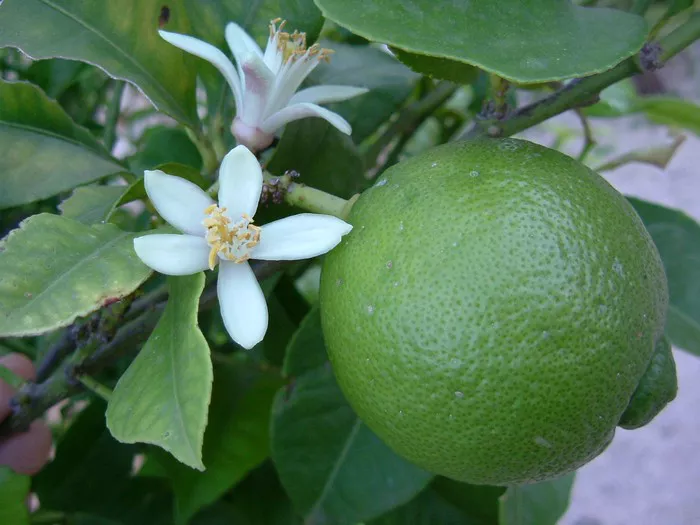Limes, with their tangy flavor and vibrant color, are a staple in cuisines around the world. Whether used in beverages, desserts, or savory dishes, limes add a refreshing zest that elevates any recipe. However, the journey of a lime from blossom to fruit is a fascinating process that requires time, care, and attention. In this article, we delve into the intricate timeline of lime growth, exploring the stages from flower to harvest.
Understanding Lime Growth
Before delving into the specific timeline of lime growth, it’s essential to understand the anatomy of the lime tree and the factors that influence its development. Limes belong to the citrus genus, which includes oranges, lemons, and grapefruits. Like other citrus fruits, limes develop from the flowers of the lime tree.
Lime trees are evergreen and typically produce flowers in the spring or early summer, depending on the climate and variety. The flowers of a lime tree are small, white, and fragrant, attracting pollinators such as bees and butterflies. Once pollinated, the flowers begin the transformation into limes, a process that unfolds over several months.
The Growth Timeline
The growth timeline of limes can vary depending on factors such as climate, soil conditions, and cultivar. However, the following timeline provides a general overview of the stages involved in the development of limes from flower to harvest:
1. Flowering Stage (0-2 months):
- The growth cycle of limes begins with the emergence of flowers on the lime tree.
- Lime trees typically produce flowers in clusters, which contain both male and female reproductive organs.
- Pollination occurs when pollen from the male parts of the flower is transferred to the female parts, either by wind or pollinators.
- Once pollinated, the flowers begin to develop into small, green fruits known as fruitlets.
2. Fruitlet Development Stage (2-4 months):
- After successful pollination, the fruitlets undergo rapid growth and development.
- During this stage, the fruitlets gradually increase in size and undergo significant physiological changes.
- The development of fruitlets is influenced by factors such as temperature, moisture, and nutrient availability.
- As the fruitlets mature, they begin to take on the characteristic shape and color of limes, although they are still small and unripe.
3. Fruit Expansion Stage (4-6 months):
- As the fruitlets continue to develop, they enter the fruit expansion stage.
- During this phase, the fruits undergo a period of rapid growth, increasing in size and weight.
- The expansion of the fruit is supported by the uptake of water, nutrients, and sugars from the tree and surrounding soil.
- The outer skin of the fruit becomes smoother, and the color begins to intensify as the limes approach maturity.
4. Ripening Stage (6-9 months):
- The ripening stage is the final phase of lime growth, during which the fruits reach full maturity and develop their characteristic flavor and aroma.
- As the limes ripen, the color changes from green to yellow or yellow-green, depending on the variety.
- The fruit becomes softer to the touch, and the skin may develop a slight give when gently squeezed.
- Ripening is accompanied by changes in sugar content, acidity, and volatile compounds, resulting in the development of the desired flavor profile.
5. Harvesting Stage (9-12 months):
- The timing of the harvest depends on factors such as the desired level of ripeness, market demand, and agricultural practices.
- Limes can be harvested individually by hand or using mechanical harvesting equipment, depending on the scale of production.
- Care must be taken during harvesting to avoid damage to the fruit and minimize post-harvest losses.
- Once harvested, limes are sorted, graded, and packed for distribution to markets and consumers.
Factors Affecting Lime Growth
Several factors can influence the growth and development of limes throughout the growth cycle. These factors include:
1. Climate: Limes thrive in warm, subtropical climates with mild winters and hot summers. Frost and extreme cold can damage lime trees and inhibit fruit production.
2. Soil Conditions: Well-drained, fertile soil with a slightly acidic pH is ideal for lime cultivation. Soil moisture and nutrient levels also play a crucial role in fruit development.
3. Water Management: Adequate irrigation is essential for promoting healthy growth and fruit development in lime trees. However, excessive moisture can lead to root rot and other diseases.
4. Pest and Disease Management: Limes are susceptible to various pests and diseases, including citrus greening, citrus canker, and citrus psyllids. Effective pest and disease management practices are essential for protecting the crop.
5. Pruning and Thinning: Proper pruning and thinning of flowers and fruit clusters can help improve fruit quality and yield by reducing competition among developing fruits and promoting air circulation within the canopy.
Conclusion
The growth timeline of limes from flower to harvest is a complex process that unfolds over several months. From the emergence of flowers to the ripening of fruit, each stage of lime growth requires careful management and attention to ensure optimal yield and quality. By understanding the factors that influence lime growth and development, growers can implement effective cultivation practices to maximize production and meet market demand for this versatile and flavorful citrus fruit.


